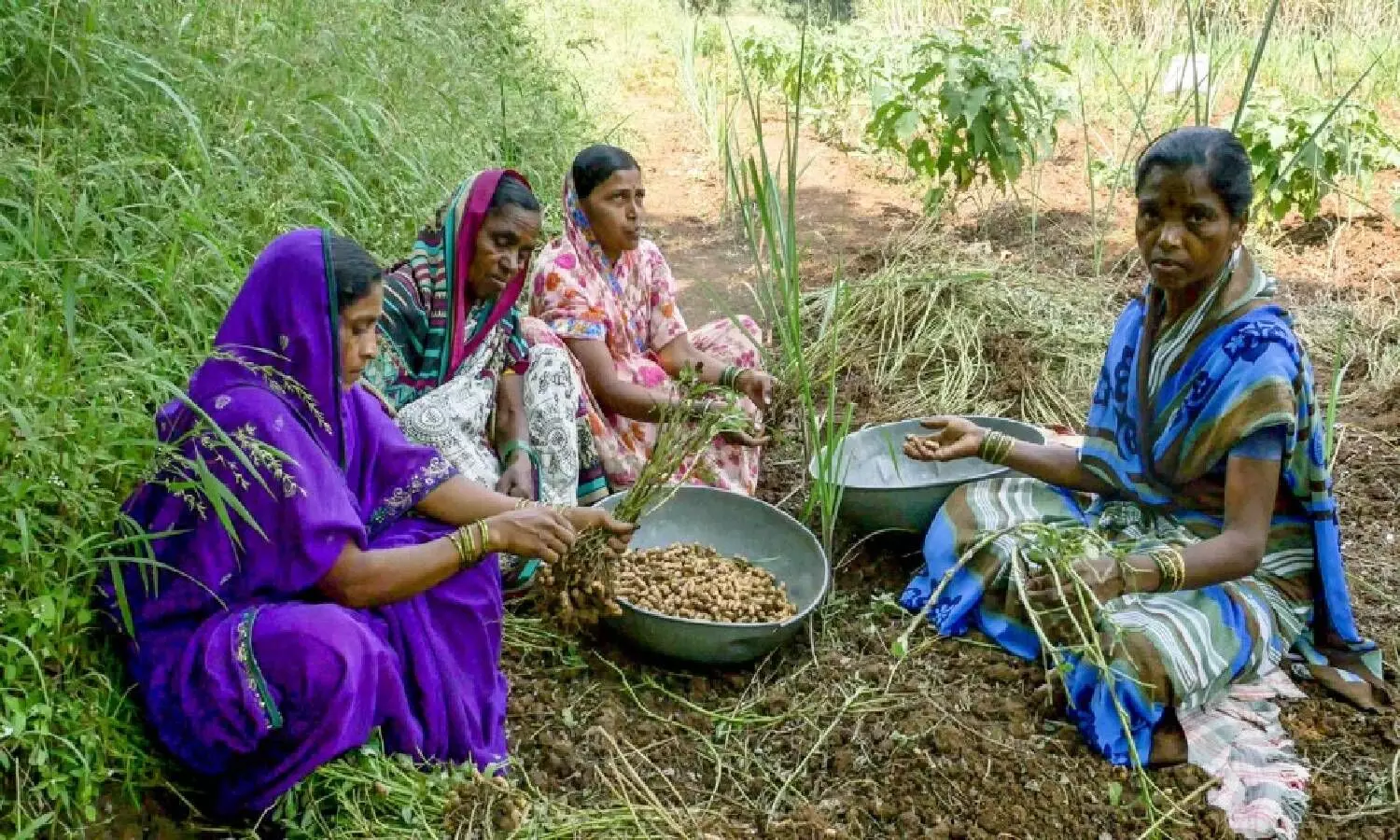Anantapur groundnut farmers suffer double whammy in pandemic: Study
Andhra Pradesh is the second-largest producer and exporter of groundnut in the country. Anantapur district is one of the major producers of groundnut in AP and occupies a lion's share in the total crop area
By Newsmeter Network
Photo: ICRISAT
Anantapur: A study conducted by International Crops Research Institute for the Semi-Arid Tropics (ICRISAT), a UN organization, has revealed that the COVID-19 pandemic caused a double burden on Anantapur groundnut farmers by disrupting farm production on one side and decreasing diet diversity on the other.
Their household incomes declined up to 50% due to disruptions in farm operations and marketing of their farm produce. This was coupled with a steep rise in farm input costs (average 23%) and food prices resulting in increased household expenditure and decreased dietary diversity.
A total of 264 respondents appeared for interviews for the study from 20 villages representing four blocks in the district. Of 264 respondents, 131 were male, and 133 were female.
Anantapur is an arid region prone to back-to-back droughts. Groundnut has traditionally been one of the most important crops grown in the area, and Andhra Pradesh is the second-largest producer and exporter of groundnut in the country. Anantapur district is one of the major producers of groundnut in AP and occupies a lion's share in the total crop area.
During the lockdown, the whole food production system is disrupted, starting from the input supplier to the end consumer. The impact varies among the different actors along the value chain. It is very severe for farmers, farm laborers, migrant workers, village-level aggregators, primary processors, secondary processors, and farm logistic service providers.
During COVID 19, farmers' stored produce, and the public distribution system that supplied staples like rice, wheat, sugar, and pulses to some extent ensured their food supply. However, this also compromised their nutritional security during the pandemic.
In the study, it is also found that the farmers reported significant uncertainty about the future. The majority (54%) of the households borrowed money by paying an average of 22% interest per annum. Besides, they mortgaged their assets such as homes, jewelry, livestock, machinery, and land to survive during the time.
Also, these farmers found disruptions in the post-production supply chain for their groundnuts due to lack of transport, storage infrastructure, market intelligence, and poor market linkages.
"With reduced business, there was a reduction in the income of all the actors in the supply chain (input dealers, brokers, and processors). For farmers, an increase in the input price, reduction in the commodity prices, and post-harvest losses were major concerns," reveals the study.
During the lockdown, restrictions on interstate transport, labor shortage, input price volatility, and pressure from input supplying companies to pay previous outstanding bills and demand for inputs on a credit basis from farmers, placed dealers under immense pressure.
They lost their income from the business by up to 75% during the pandemic. Overhead costs of input shops such as rent, electricity charges, and higher wages for the labor added to their expenditure.
Village-level brokers and primary processors were also affected by the pandemic. About 75% of the brokers reported that the pandemic affected their economic activities, leading to losses and 88% of the primary processors were unable to buy materials from farmers or village-level brokers which affected supply to their buyers further down the value chain.